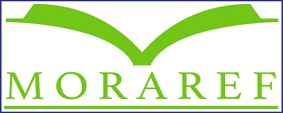HUBUNGAN STATUS GIZI DENGAN KEJADIAN PIODERMA PADA BALITA DI DESA KUOK
DOI:
https://doi.org/10.31004/prepotif.v4i2.1007Keywords:
Pioderma, Nutritional StatusAbstract
Children under the age of five or under five are a group that is prone to nutrition, because they are prone to malnutrition due to lack of food needed. Malnutrition in children will cause decreased immunity, which means that the ability to defend themselves against bacterial infection decreases. Children who have less nutritional status have the potential to suffer from pyoderma. Lack of the amount of food consumed both in quality and quantity can reduce the nutritional status of children. The purpose of this study was to determine the relationship between nutritional status and the incidence of pyoderma in toddlers (1-5 years) in Kuok Village, the working area of Puskesmas Kuok in 2020. This study used an analytical research design with a case control design. The sample in this study were 62 children (1-5 years). 31 samples for the case group and 31 samples for the control group. data collection through questionnaires. Data processing used univariate and bivariate analysis with the Chi-Square test. The results showed that there was a significant relationship between nutritional status and the incidence of pyoderma in toddlers (1-5 years) with p value = 0.001. By holding this research, the researchers expected parents of toddlers to pay more attention to the nutritional status of their children in order to avoid infectious diseases such as pyoderma.References
Almatsier. (2010). Status Gizi Lebih. Dalam Ariani, P.A. (2017). Ilmu Gizi. Jakarta : Nuha Medika.
Almatsier. (2010). Status Gizi Baik. Dalam Ariani, P.A. (2017). Ilmu Gizi. Jakarta: Nuha Medika.
Almatsier. (2010). Status Gizi Kurang. Dalam Ariani, P.A. (2017). Ilmu Gizi. Jakarta : Nuha Medika.
Almatsier. (2010). Status Gizi Buruk. Dalam Ariani, P.A. (2017). Ilmu Gizi. Jakarta : Nuha Medika.
Djuanda, A. (2016). Klasifikasi Pioderma. Dalam Srilinuwih (Ed). Ilmu Penyakit Kulit Dan Kelamin Edisi Ketujuh. Jakarta : Fakultas Ilmu Kedokteran Universitas Indonesia.
Djuanda, A. (2016). Bentuk-Bentuk Pioderma. Dalam Srilinuwih (Ed). Ilmu Penyakit Kulit Dan Kelamin Edisi Ketujuh. Jakarta : Fakultas Ilmu Kedokteran Universitas Indonesia.
Depkes, RI (2012). Profil Kesahatan Indonesia di akses tanggal 18 Maret 2020.
Dinkes Kabupaten Kampar (2019) diakses tanggal 18 Maret 2020.
Dinkes Provinsi Riau (2012). Jurnal e-Clinic, Volume 4, Nomor 2, Juli-Desember 2016 di akses tanggal 18 Maret 2020.
Lumataw, dkk. (2016). Profil Pioderma Pada Anak Di Poliklinik Kulit Dan Kelamin RSUP Prof. Dr. R. D. Kandou Manado. Di akses tanggal 15 Maret 2020.
Mistik, dkk. (2015). Profil Pioderma Pada Anak Usia 0-14 Tahun Di Rumah Sakit Umum Pusat Sanglah Denpasar Periode Juni 2015-Juni 2016. Di akses tanggal 15 Maret 2020.
Notoatmodjo, S. (2010). Metodologi Penelitian Kesehatan. Jakarta : Rineka Cipta.
Nugraha, P.H. (2018). Hubungan Tingkat Status Gizi Dengan Kejadian Pioderma Superfisialis Pada Anak Usia 6-10 Tahun. Di akses tanggal 15 Maret 2020.
Oentari & Menaldi. (2015). Kapita Selekta Kedokteran. Jakarta : Media Aesculaplus.
Widya, J. (2016). Pioderma Pada Bayi Dan Anak. Di akses tanggal 17 Maret 2020.
Downloads
Published
How to Cite
Issue
Section
License
Copyright (c) 2020 Alini Alini

This work is licensed under a Creative Commons Attribution-ShareAlike 4.0 International License.
Authors who publish with this journal agree to the following terms:
- Authors retain copyright and grant the journal right of first publication with the work simultaneously licensed under a Creative Commons Attribution License that allows others to share the work with an acknowledgement of the work’s authorship and initial publication in this journal.
- Authors are able to enter into separate, additional contractual arrangements for the non-exclusive distribution of the journal’s published version of the work (e.g., post it to an institutional repository or publish it in a book), with an acknowledgement of its initial publication in this journal.
- Authors are permitted and encouraged to post their work online (e.g., in institutional repositories or on their website) prior to and during the submission process, as it can lead to productive exchanges, as well as earlier and greater citation of published work (See The Effect of Open Access).











